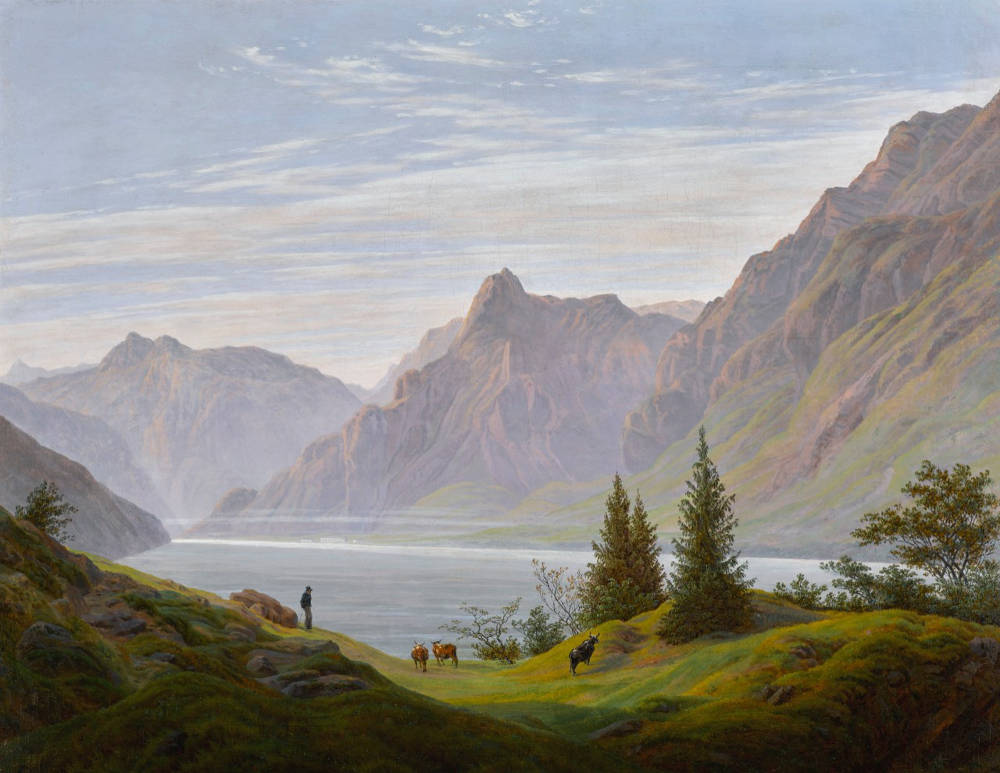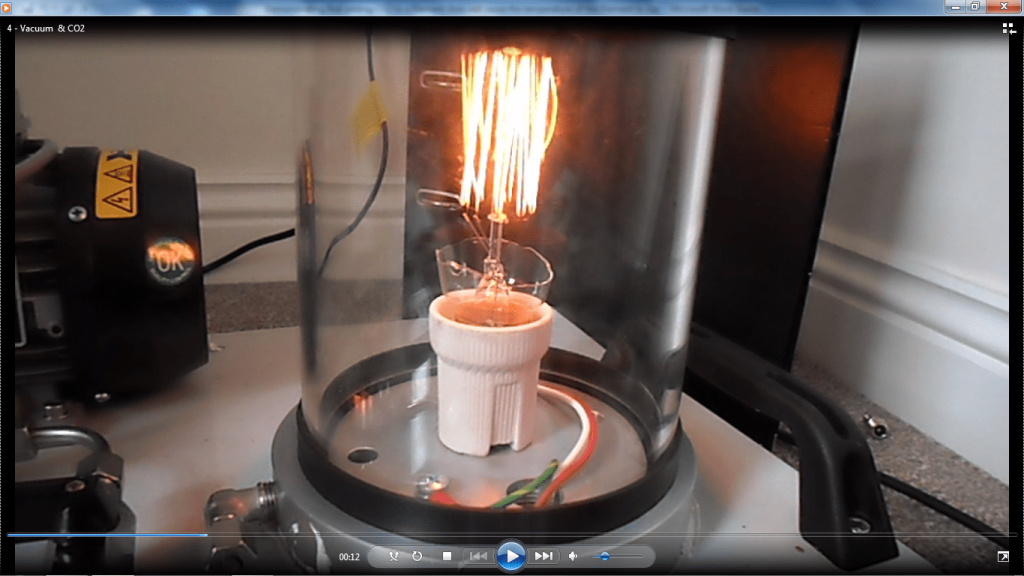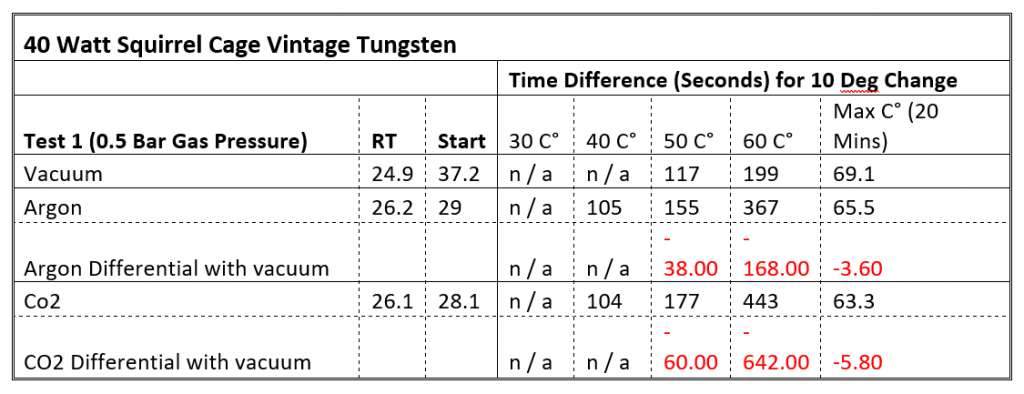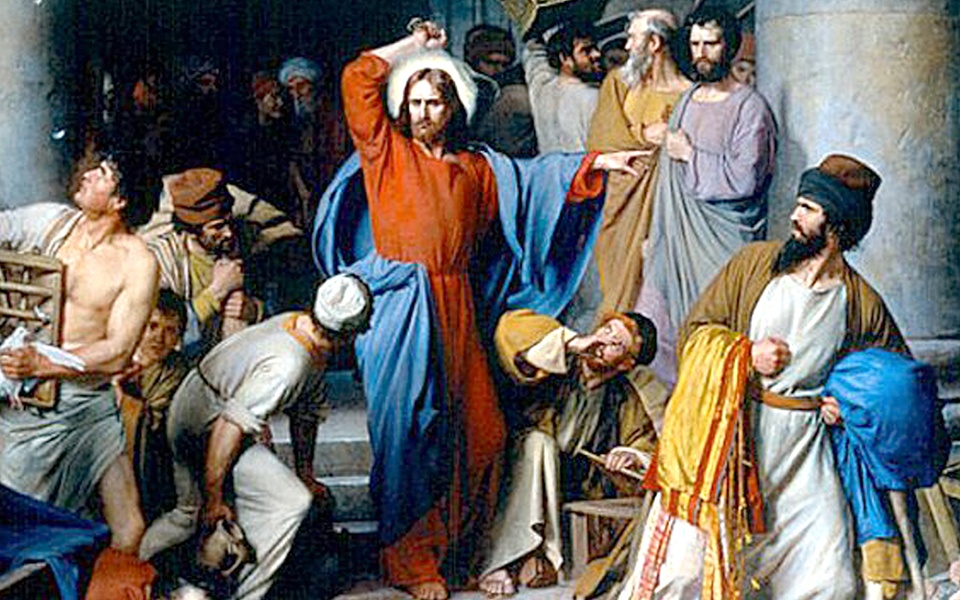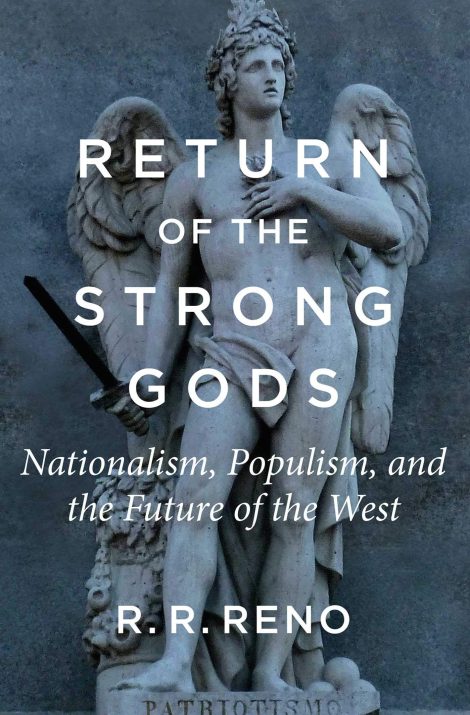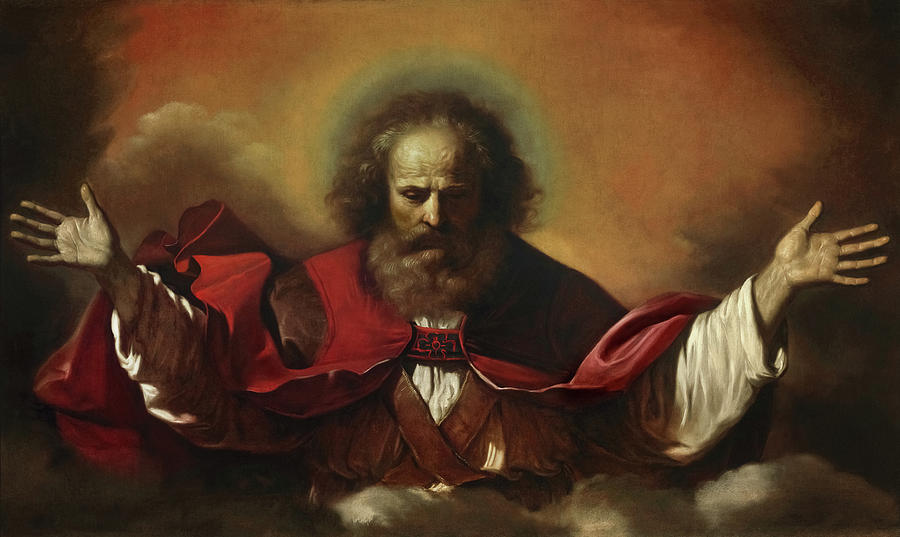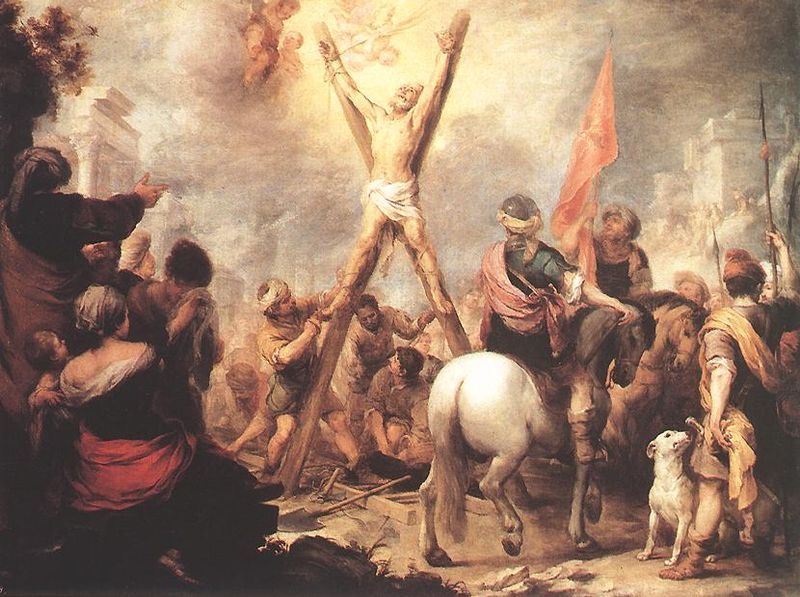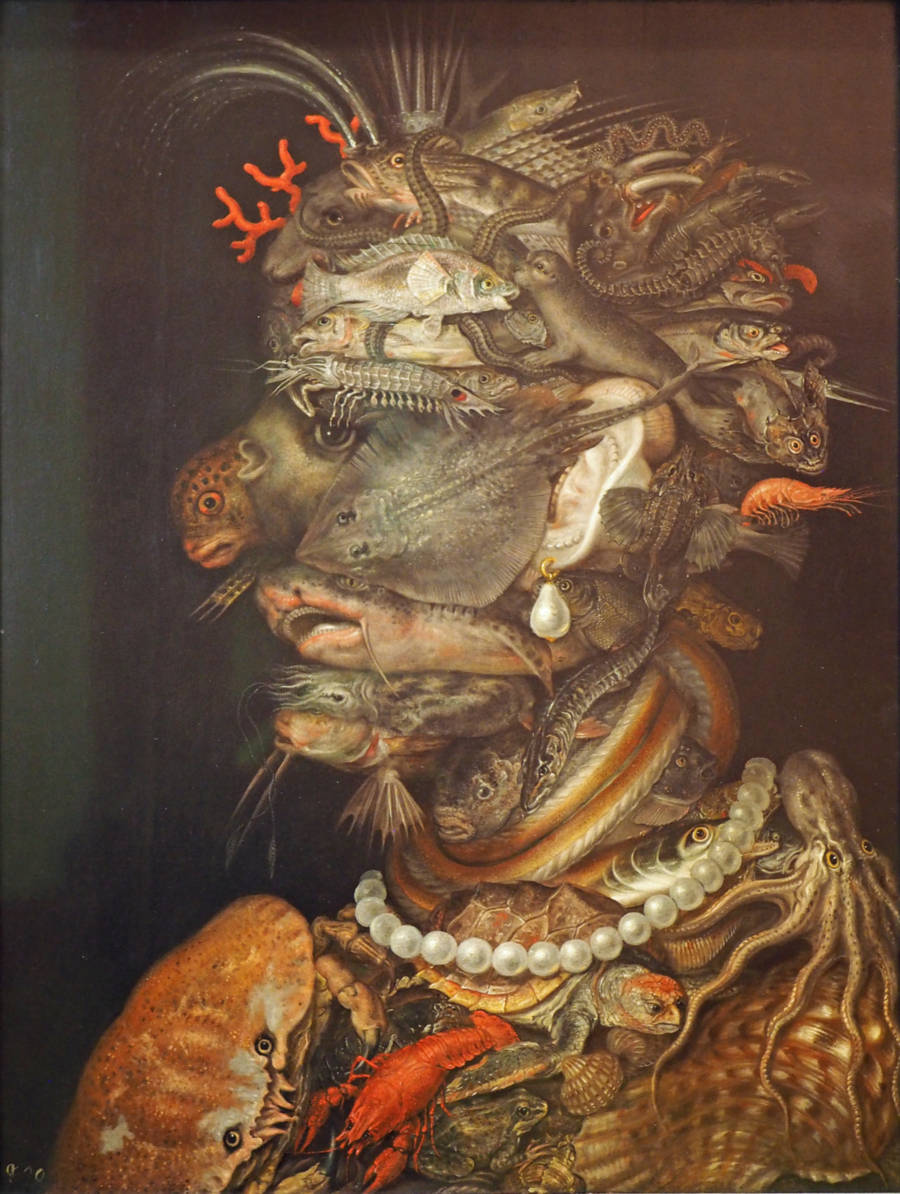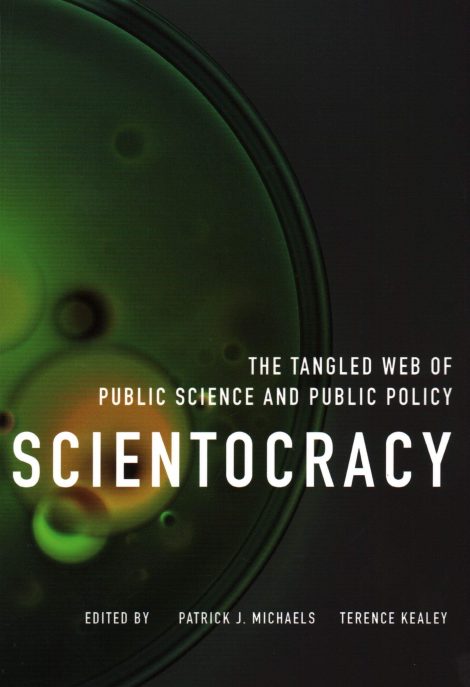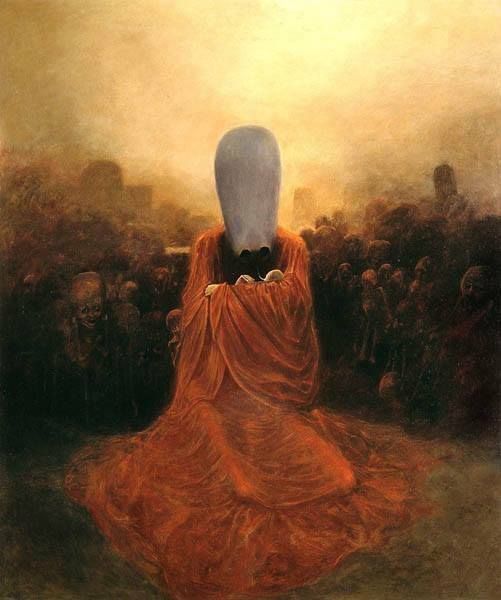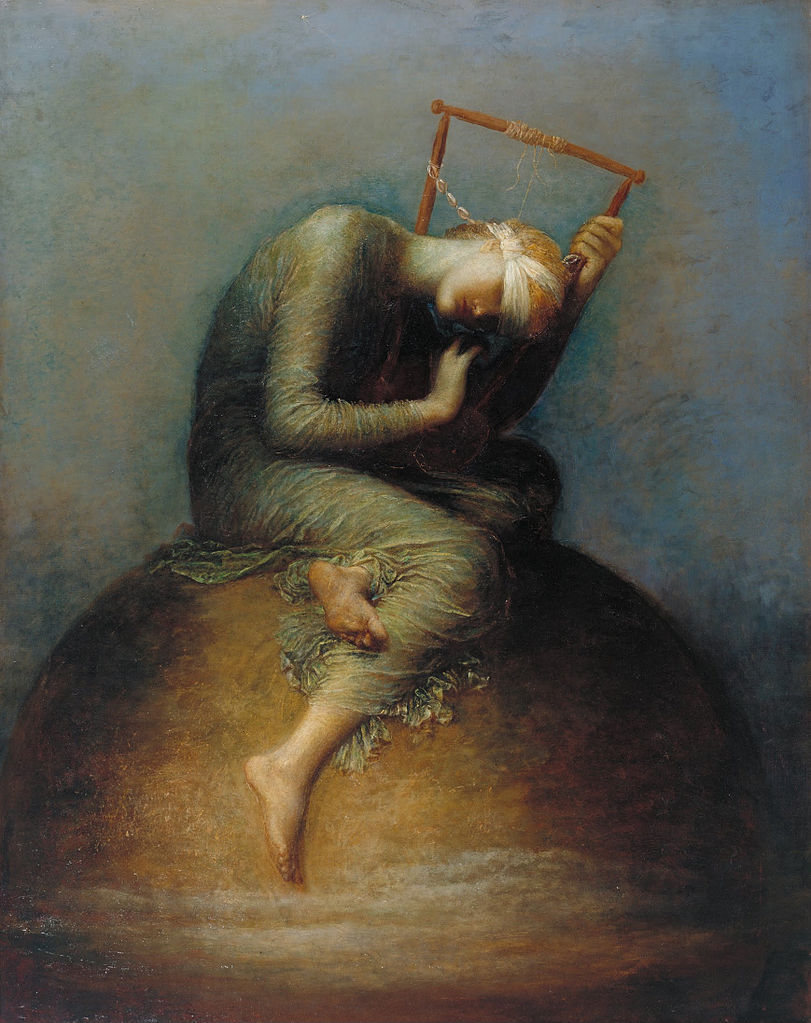Rusty Reno, editor of the prominent religious conservative journal First Things, here couples an original diagnosis of how we got to the vicious decay of now with very muted prescriptions. This is a good enough book, earnest and intent, but it is cramped. Reno offers as an alternative not strong gods, nor even coherent positive visions of the nationalism and populism of the title, but only the tired and repeatedly failed call to return, though some unspecified mechanism, to vaguely conceived virtue.
I’m all for virtue, but Reno refuses to acknowledge that, more likely, and more desirable, the strong gods are those who will inevitably, as Kipling said, with fever and slaughter return, to scour the Earth in preparation for the rebirth of actual, living virtue.
In brief, this book is an extended attack on the so-called open society, created by the so-called postwar consensus of how the West should believe. We are all indoctrinated that the open society, never really defined, is wonderful, so Reno’s attacking it at first seems like attacking Nutella. This is true for liberals, for whom unlimited openness has been the goal since John Stuart Mill, and for twentieth-century conservatives, who were long taught to associate openness with anti-Communism, and thus saw no reason to question it, until its poisoned fruits came to full ripeness.
I don’t disagree with any of Reno’s extended history and analysis of the open society; I just think it’s too limited. As with Reno’s 2017 book, Resurrecting the Idea of a Christian Society, he is too abstract, and will not grapple with what can be, and with what must be, done.
I am much exercised, as regular readers know, with the very recent split among conservatives, between those who have come to reject the whole of the Enlightenment as a dead end, broadly speaking, characterized as post-liberals, and those who accept Enlightenment principles, and thus the premises of their enemies, and merely want to dial back some excesses, or if denied that by their masters, reach Left goals a little slower. No points for guessing which group has been in charge while conservatives have gone down to crushing defeat again and again.
Reno does not fall clearly into either group, which I think is meant as a compromise among ever-louder competing voices, but is really an unstable balancing act, in which Reno finally falls between two chairs.
He starts by acknowledging post-liberals such as Patrick Deneen and (an early voice) Alasdair MacIntyre, and if I had not read this book, I would have guessed that Reno mostly agrees with them. Yet, after some wavering, he comes down on the side of the Enlightenment—that is, of liberalism, of atomized freedom, and the destruction of all unchosen bonds in a desperate quest for total emancipation. For Reno, we find, it was not 1789, but 1945, which was the year that it all went wrong.
As Reno sums his view up, in his own italics, “The distempers afflicting public life today reflect a crisis of the postwar consensus, the weak gods of openness and weakening, not a crisis of liberalism, modernity, or the West.” Reno’s argument is that after the horrors of the first half of the twentieth century, the ruling classes of the West chose to create societies of “openness, weakening, and disenchantment,” in an explicit attempt to prevent the “return of the strong gods”—“the objects of men’s love and devotion, the sources of the passions and loyalties that united societies.”
Rather than simply trying to wall out only the terrible strong gods, the ruling classes chose to wall them all out: truth along with fascism; loyalty along with Communism.
At least Reno openly rejects any need for preemptive apologies, wherein as a conservative he would, in the past, have been expected to first talk at length about the evils of Nazism and fascism, and dissociate himself from them. He refuses, since he knows this is a propaganda trick used to make conservatives behave and look weak.
Instead, he begins with something unexpected, but apt—a lengthy attack on Karl Popper, whose The Open Society and Its Enemies he identifies as the first philosophical attempt to create the postwar consensus under which openness was the first and only commandment.
Popper rejected claims of metaphysical truth and insisted we must each seek, and create, our own meaning—not truth, merely meaning, a small and ambiguous word. Reno then draws a straight line from Popper to George H. W. Bush’s infamous 1990 address to the United Nations, where he demanded that we create “a new and different world . . . of open borders, open trade, and, most importantly, open minds.”
With the Left, all words have special meanings, and here it is no different. “Open” here means not actually open, but closed against the strong gods and minatory toward their adherents. “Open” does not mean free, but coercive—Ryszard Legutko’s “coercion to freedom,” where “democracy” only happens when votes are for the Left, and “liberalism” is where Left social goals are realized. It is no coincidence that that evil little troll, George Soros, was a student of Popper, and named his left-wing pressure group, most famous recently for losing the vicious battle it waged against the Hungarian people, “The Open Society Foundations.”
But none of this is acknowledged by Reno, who does mention Soros, but fails to draw the obvious conclusion: that calls for the “open society” have, and always had, a double purpose—to avoid totalitarianism of the Right, and, just as importantly, to enthrone totalitarianism of the Left. He is so busy being thoughtful that, as in the Edgar Allan Poe tale “The Cask of Amontillado,” he is walled in by his enemies by the time the talking is done.
In Reno’s analysis, Popper was followed and reinforced by many others: men such as Arthur Schlesinger and Theodor Adorno, avatar of the Frankfurt School and author of The Authoritarian Personality.
Critically, though, it is not only from such obvious leftists that Reno derives the “postwar consensus.” He also identifies conservatives equally responsible. For example, he draws a tight connection between Popper and Friedrich Hayek.
Hayek’s main target was central economic planning as leading to totalitarianism, but in so doing, Hayek exalted individual choice and rejected any concept of the common good, except as arising through individual choice. Government regulation was permitted, to be sure, but only to effectuate individual choices in achieving maximum freedom of play. Social consensus for Hayek was a threat, if it was anything but hortatory, unless it was directed to achieving freedom of individual action.
During the Cold War, this was a powerful anti-Communist vision, which conservatives endorsed, not seeing the sting buried within. Reno points out that “Like those in the 1990s who predicted that capitalism would bring democracy and freedom to China, Hayek believed that the market mechanism is intrinsically anti-totalitarian.” Hayek was wrong, as we can see both from China, and from our own budding totalitarian combination of the Lords of Tech and woke capitalism.
And, compounding his sin in the eyes of elderly conservatives who, for some reason, still burn incense at the altar of William F. Buckley, Reno analyzes how Buckley, starting with God and Man at Yale, similarly rejected in practice any focus on the common good and himself exalted atomized individual choice—probably helped along by being called a racist and fascist for even the modest endorsement of public virtue in his first book, combined with his keen desire to continue to be socially accepted by Left circles in New York, which the name-calling threatened to prevent.
As we all know, Buckley spent much of his energy for decades thereafter policing the Right, throwing out anyone who was anathema to the Left, and ended his life having accomplished nothing. He didn’t fight Tolkein’s Long Defeat, he fought his very own Short Defeat, and took us down with him.
Reno attributes Buckley’s insipid approach to that “he intuited, at least in part, that he could engage in public life only if he adapted his arguments to the growing postwar consensus in favor of the open society. That meant no strong gods—no large truths, no common loves, and no commanding loyalties.” (This is the closest Reno gets to actually defining the “strong gods”).
Hewing to this line was the only way to “give conservatives a place at the table,” but over time, “the tactic became a strategy.” Maybe so, but more likely Buckley was simply not the right man for the job. That doesn’t mean there was a right man for the job—Reno endorses Yuval Levin’s thesis in The Fractured Republic that postwar America was doomed to follow this path. At this point, though, who knows?
In any case, that’s all in the first chapter; it’s mostly history. Unfortunately, three-quarters of the book is mostly history, and repetitive history at that, viewing the creation of the open society from slightly different angles. Reno, for example, ties the initial impulse to avoid totalitarianism to the growth of multiculturalism, a “therapy of disenchantment” that denies any role for the strong gods of one’s own society.
In another thread, Reno describes how, for a time, the Great Books were emphasized, not to teach truth, but to allow each reader to draw his own conclusions. Reno does not engage Patrick Deneen’s argument that the Great Books themselves are, mostly, part of the problem rather than the solution, since most of them are works of the Enlightenment.
Since Reno denies that there was any societal problem prior to 1945, that is no surprise, but again, it makes Reno’s argument neither fish nor fowl among contemporary conservative debates, and it feels like whistling past the graveyard.
Thus, Reno attributes the decay that began in the 1960s and accelerated thereafter to an excessive attachment to the open society, not to Enlightenment principles. For him, it is a problem of disenchantment, and he seems in some places to think that we could have held the center if not for that obsession.
The truth is that the open society is, of course, merely a later manifestation of John Stuart Mill and his kind. While Reno mentions Mill in passing, he insists that all this is a postwar phenomenon. This is unconvincing. The open society is merely the latest guise of the Enlightenment project, protean as usual, able to pretend in one decade that it is the antidote to fascism and in another to fascistically force bakers to bake cakes for perverts. Reno simply skates on by these crucial matters.
Regardless, we are taken on a long ride, through Milton Friedman through Jacques Derrida and, oddly, repeated references to the lightweight economics blogger Tyler Cowen, along with a long discussion of Italian writer Gianni Vattimo.
We also touch on modernist architecture as emblematic of the open society, identity politics as the Caliban of the open society, and, citing Douglas Murray, how the open society results in leaders who hate their own people, something even more on display in Europe than here, though Hillary Clinton certainly gave Angela Merkel a run for her money.
Finally, we get to solutions. Well, not really. We instead get Émile Durkheim, who first pointed out, in 1912, that the Enlightenment had destroyed the old gods, and new ones were yet to be born. (Reno does not seem aware that his endorsing Durkheim suggests that he is wrong that the problems arose primarily after 1945).
We get a Durkheimian definition of the strong gods: “whatever has the power to inspire love.” We get talk of “we” and of the res publica, and a note that “the open-society therapies of weakening” cannot overcome the bad strong gods, “the perverse gods of blood, soil, and identity.”
Then we get a petering out, ten pages of rambling about “us” and recovering virtue, recommending mild nationalism and highly limited populism, “new metaphysical dreams,” concluding “Our task, therefore, is to restore public life in the West by developing a language of love and a vision of the ‘we’ that befits our dignity and appeals to reason as well as our hearts.”
What this would look like or how to get there we are not told. Weirdly, Reno is even aware that this is totally unsatisfactory, noting in his Acknowledgements that all his readers “warned me that I come up short in my final chapter.” If I were told that, I would rewrite my book, but Reno seems to think this is some kind of virtue.
Throughout the book, Reno is unwilling to follow his own thoughts, shrinking time after time from the obvious conclusions because he is afraid of being seen as too devoted to the wrong strong gods.
For example, after noting the deficiencies of mass democracy, he maintains that it is a “blessing,” because, you see, it “encourages [the populace] to transcend their me-centered existence,” a thesis for which he gives no evidence and which is contrary to all historical fact.
He even points out that “the freedom Romans loved was not individual freedom but the freedom of the city, the liberty of a people to make its own laws and embark on its own projects.” Yet he cannot see that exalting autonomic individuality is fatal, and its origin has nothing to do with 1945.
Self-hobbled, therefore, Reno offers not strong gods, but merely what remains of the strong gods after being emasculated by the Enlightenment, and he has no plan for releasing even them from the pen in which our rulers have confined them.
But you are in luck today. I’ll do what Reno fails to do—I’ll tell you what should be done with the strong gods, or rather, what will happen with the strong gods, who, after all, exist whether we want them to or not. It is instructive to note that the cover of this book features a statue that, at first glance, appears to be the Archangel Michael, a young, winged man with a sword.
It is not the Archangel, though. I had to dig outside the book (which does not refer to its cover art) to find out what the statue is. It is a detail of a monument in Madrid, the “Monument to the Heroes of the Second of May,” commemorating Spaniards executed in 1808 by the French after an armed uprising against Napoleonic occupation, a precursor to the Peninsular War. (This is the same event shown in the famous Goya painting of a firing squad).
The specific virtue of which the statue is meant as an allegory is “Patriotism.” Meditating on this shows the wrong turn in Reno’s approach. For him, patriotism is a gauzy love, one that can be shared by all, with overtones of ice cream and Independence Day parades. He calls it a strong god, nonetheless, since it has to do with human loves.
Yet we must recognize that it is not for nothing that the angel carries a sword, drawn for action. He seeks not delicious cold treats, but blood, for his enemies hem him round, having already slain his companions, and he stands ready to strike, for God and country—as did the Spaniards whom the angel commemorates.
Reno calls for unity, but fails to perceive, or admit, that unity cannot be accomplished among a people that lacks sufficient commonality to share a joint concept of ordered liberty. He precisely analyzes the so-called open society, and its effects, but refuses to draw the obvious conclusion—that its principles have corroded the foundations of American society, so unity is impossible until the corroded foundations are rebuilt. And that they can only be rebuilt in a manner such that Left, or Right, will rule permanently, and the other suppressed permanently.
Where wholly incompatible visions of the good live side by side, someone must rule. Today that is the Left—the hard Left in all social matters, and the neoliberal Left, combined with segments of the supposed Right, in economic matters, papering over our social pathologies with consumerism. We are propagandized that this is natural, inevitable, and unchangeable.
But in truth, as it is said, past performance is no indicator of future results.
What we need, and what Reno should have called for, is the return of the real strong gods, those that fired the imagination of men like Hernán Cortes, Godfrey of Bouillon, and Robert Gould Shaw. They will bring unity, a unity of the Right that permits us to win the power to rule.
Since the Left never, ever, ever, voluntarily gives up even one crumb of power, the resulting conflict will likely be violent (certainly, the Left has already embarked on widespread violence against the Right, proving my point).
The alternative is waiting for years, or decades, as the Left finishes its project to choke the life out of the West, then collapses utterly as reality catches up, no doubt leading to a long dark age. We should not permit it, nor allow their crimes to be visited upon future generations.
What will initiate open, two-sided conflict, if it comes, is opaque now, as it always is. Only in retrospect will it be obvious, yet we can be sure that as it comes, the real strong gods, of men’s love of family, of country, of righteousness, of justice, will return.
G. K. Chesterton, as usual, saw this a long time ago—that rather than interminable repression by the Left, “Likelier the barricades shall blare / Slaughter below and smoke above, / And death and hate and hell declare / That men have found a thing to love.”
This is far from the first time I have suggested violence is the near-inevitable end of our societal arc, and I risk being repetitive, so I will not belabor the topic, and hope to avoid it for a while after this review. Within the frame of his book, Reno nods to his desire for a Christian renewal, yet despairs of it. One suspects, though, that his renewal, if it arrived, would be insipid, unable to actually deal with the Left, and Cortes and Shaw would not be invited.
Insipid Christianity is not in short supply; we don’t need more of it. I have written in detail recently, in my review of Bronze Age Mindset, of the ferment on the post-Christian Right.
In this context, post-Christian does not mean anti-Christian; that we are a post-Christian society is, in large part, the fault of Christians themselves, and far from the worst choice is allying with those not Christian who at least do not hate and wish to destroy us.
I predict, in short, that this ferment on the Right, only a few bubbles of which are yet visible, will soon remake the world around us, through the agency of the real strong gods. Buckle up, and make ready, for I have little doubt that, soon enough, all our lives will be a lot more interesting.
Charles is a business owner and operator, in manufacturing, and a recovering big firm M&A lawyer. He runs the blog, The Worthy House.
The photo shows, “Casting Out the Mnney Changers,” by Carl Heinrich Bloch (1834-1890).

